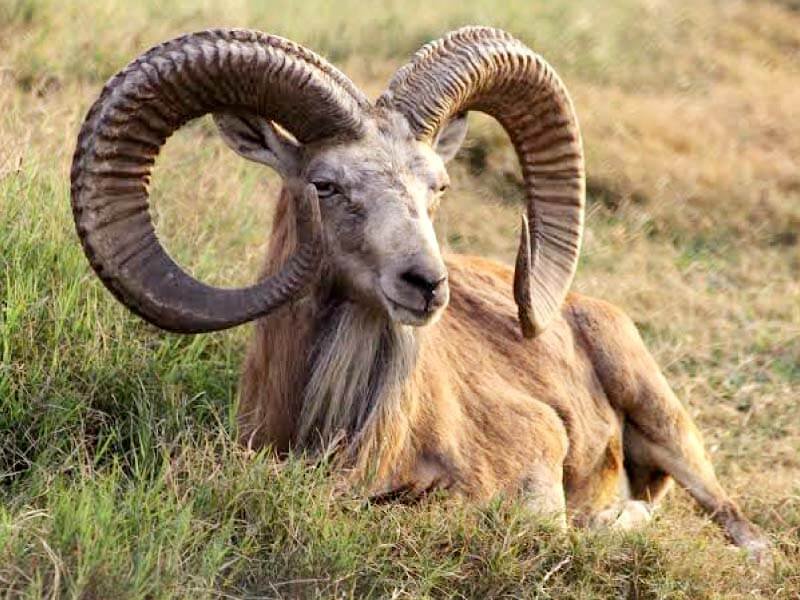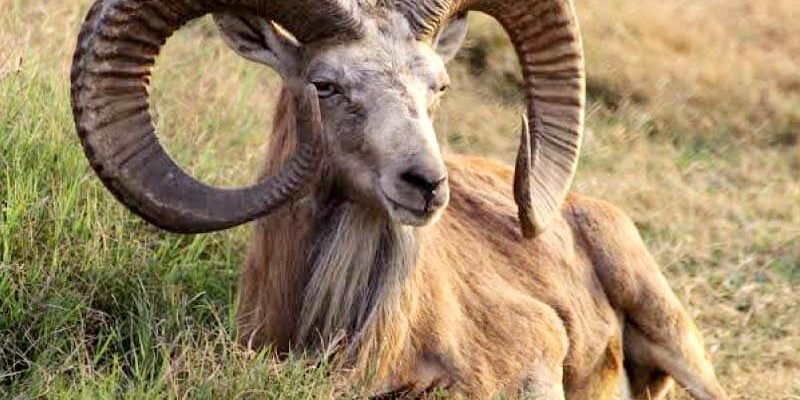
When you think about animals in the wild, you might picture them as fearless predators or, alternatively, as delicate herbivores. The urial straddles this line. While they primarily feast on plants, their behavior and strategies reflect a deep understanding of their surroundings, much like a savvy city dweller knowing the best places to grab a bite without running into any trouble. So, let’s unpack how these animals eat and avoid becoming someone else’s dinner.
Understanding Urial Diet: What Do They Eat?
Urials primarily rely on a herbivorous diet, which means they munch on plants to fuel their bodies. But it’s not just any plant that’ll do; they’re selective grazers. They enjoy a mix of grasses, shrubs, and even leaves from trees. Think of them as the picky eaters of the wild—they’re not just looking for anything green; they’re after the good stuff.
These sheep adapt their diet based on the season and the availability of food. During spring and summer, when vegetation is lush, urials feast on tender grasses and flowering plants. In the colder months, when food scarcity becomes a real challenge, they switch gears and rely on tougher vegetation, including dried grasses and shrubs. It’s a bit like adjusting your diet when going from summer BBQs to winter comfort food—versatility is key.
Urials also have a unique trait that helps them merge into their environment. Their ability to roam across rocky terrains allows them to seek out food sources that might be overlooked by other herbivores. This selective grazing and adaptability to seasonal changes make them efficient foragers, demonstrating how survival often depends on flexibility.
Hunting Strategies: How Urials Stay Safe
Now, let’s shift gears to the more thrilling aspect of life for the urial: survival! You might be wondering how they manage to stay safe from predators while foraging for food. The secret lies in their keen instincts and social behavior.
Urials are known for their alertness. They possess excellent eyesight, allowing them to spot potential dangers from a distance. Their natural habitat, characterized by hills and valleys, provides them with multiple escape routes. When one urial senses danger, it often signals the others in the group, enabling them to stay one step ahead. Imagine a well-coordinated team in a game of tag, where everyone keeps an eye out for the “it” player!
Another fascinating aspect of urial behavior is their social structure. They tend to form small groups, usually consisting of females and their young. This social strategy not only helps them find food more efficiently but also enhances their safety. A larger herd can intimidate smaller predators and increase vigilance against threats. It’s a classic case of strength in numbers.
Predators of the Urial: Who’s After Them?
Despite their agility and alertness, urials do face a few formidable predators in their habitat. The main threats come from large carnivores like wolves and leopards. These hunters have the advantage of speed and stealth, making them a significant danger for the unsuspecting urial.
Wolves tend to hunt in packs, which can complicate the urial’s escape strategies. When urials are confronted with a pack, they often rely on their agility and knowledge of the terrain to dodge attacks. Just picture yourself navigating a crowded room, dodging people to reach the exit—you’ve got to be quick and smart!
On the other hand, leopards usually prefer to stalk their prey and strike unexpectedly. This makes it crucial for urials to stay alert and utilize their surroundings effectively. When they spot a leopard’s spots through the foliage, they might dart towards the nearest rocky outcrop or thick brush, where they can hide until the danger has passed.
Seasonal Changes and Their Impact on Hunting Behavior
As the seasons change, so do the challenges and strategies for survival. In spring and summer, urials can graze freely on abundant greenery. However, as the weather turns colder and resources dwindle, their hunting and foraging behaviors adapt accordingly.
During the colder months, when fresh vegetation is scarce, urials often shift their grazing patterns to include more woody brows and shrubs. This change is essential for their nutrition but also affects their behavior. They might spend longer periods in specific areas where food sources are more plentiful, leading to a greater risk of encountering predators. It’s a delicate balance—like choosing to hang out at a popular café during a busy hour, knowing that while there are delicious treats, the crowds might make it tricky to enjoy your time.
Additionally, during the rutting season, male urials become more active and sometimes engage in displays of strength and dominance. This behavior can draw attention to them, making them more vulnerable to predation. It’s a classic case of trying to attract a mate while simultaneously attracting danger.
Human Impact on Urial Diet and Hunting Strategies
As we start looking at how humans affect the urial, it’s essential to consider both habitat and food sources. Over the years, human activities like agriculture and urban development have encroached on urial habitats, reducing the availability of natural food sources. This situation can lead to increased competition for food and may force urials into smaller areas, making them more vulnerable to predators.
Additionally, hunting pressures from humans can directly impact urial populations. In some areas, they are hunted for their meat and horns, which can disrupt social structures and decrease population numbers. Think of it like a neighborhood where a few families suddenly move away—suddenly, the entire community feels the change.
However, conservation efforts are underway in many regions. By protecting their habitats and implementing sustainable hunting regulations, we can help ensure that these majestic animals continue to thrive in the wild. Urial populations are a reflection of the health of their ecosystems, and preserving them can lead to benefits for other wildlife as well.
The urial is a remarkable creature that embodies resilience in the face of nature’s challenges. Their dietary habits and hunting strategies illustrate a relationship with their environment that is both intricate and profound. From their selective grazing to their knack for avoiding predators, urials show us just how adaptable life in the wild can be.
As we learn more about the urial, we also gain insights into the broader ecosystem they inhabit. Protecting these animals means caring for their habitats and respecting the balance of nature. So, the next time you think of these wild sheep, remember that their survival always comes down to their clever strategies and the strength of their social bonds. Together, they navigate a world filled with challenges, showcasing the brilliance of nature at its best.

